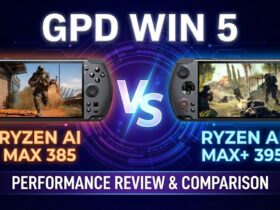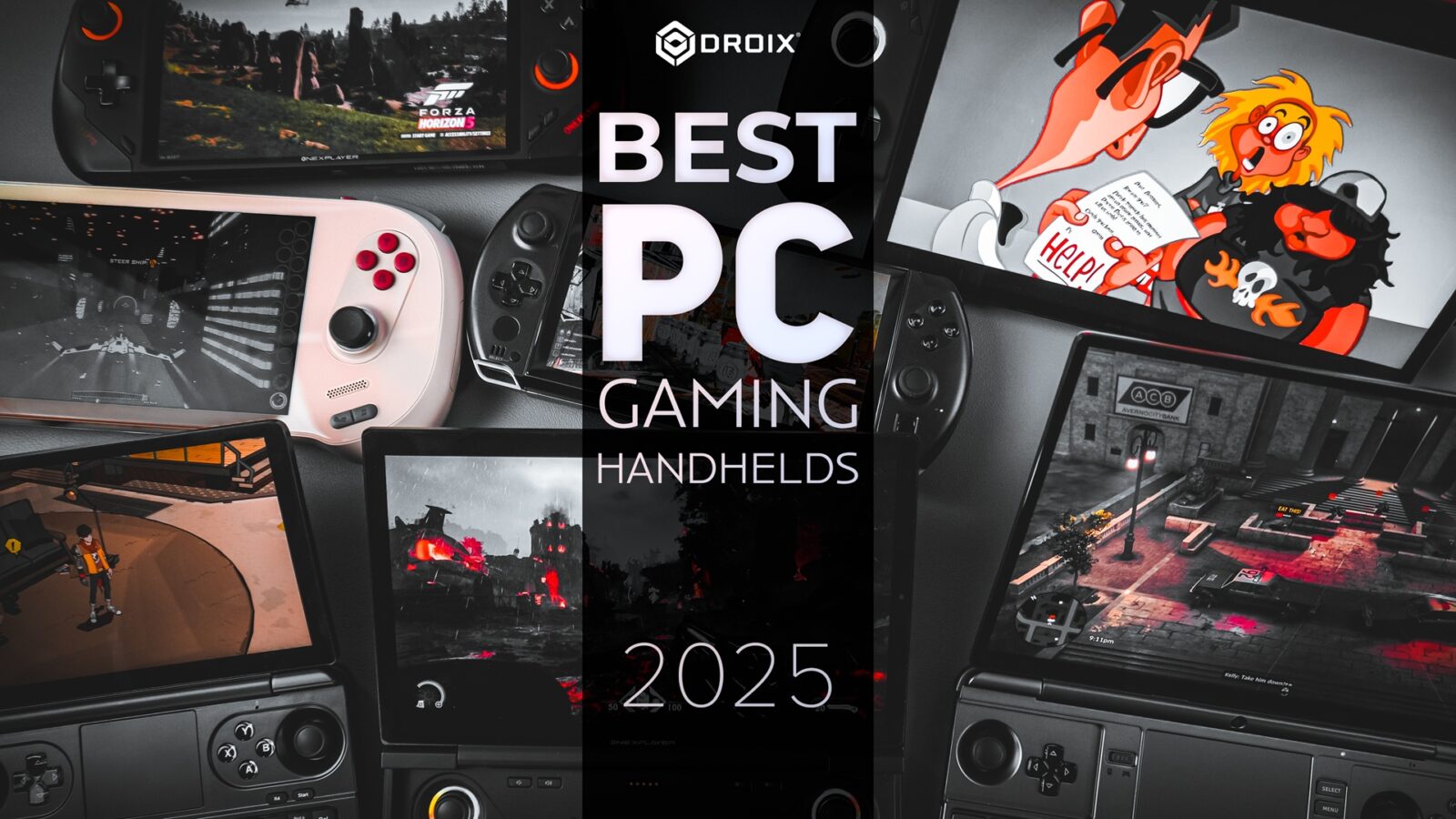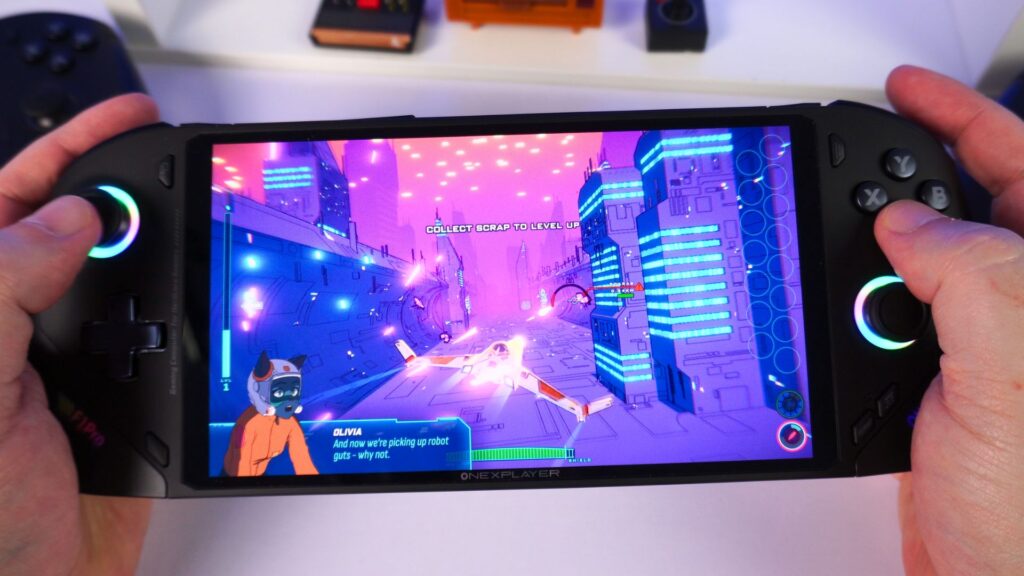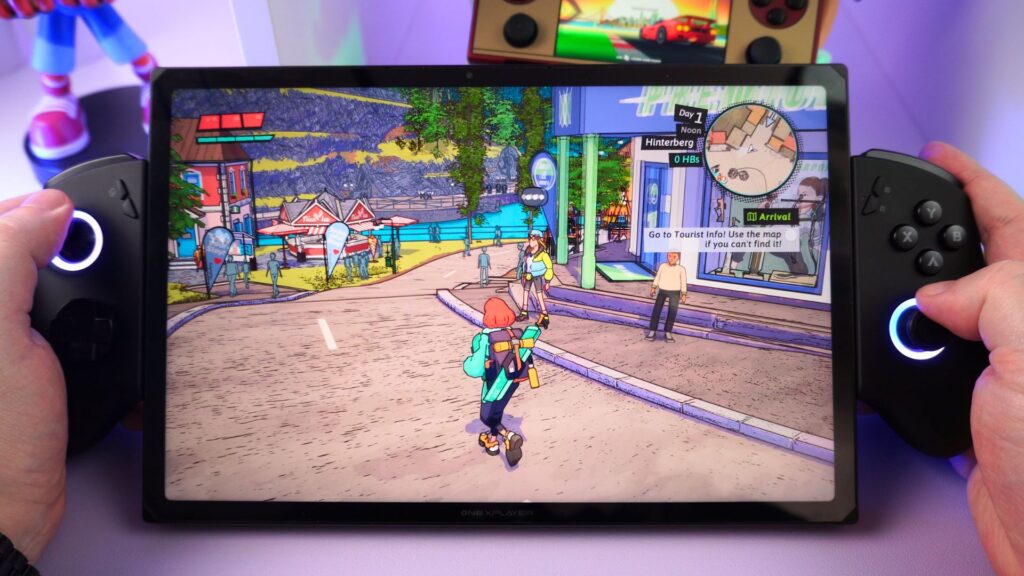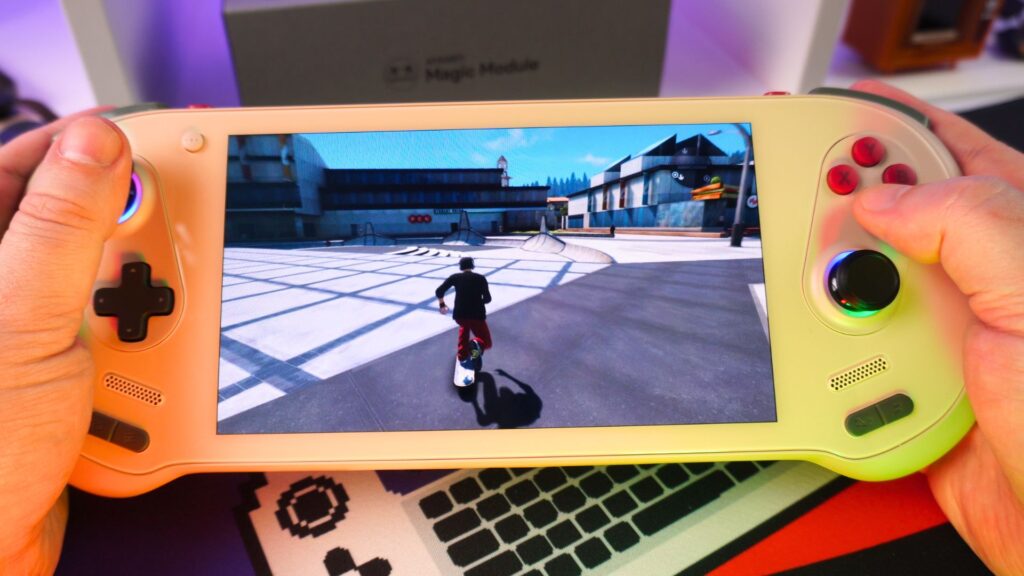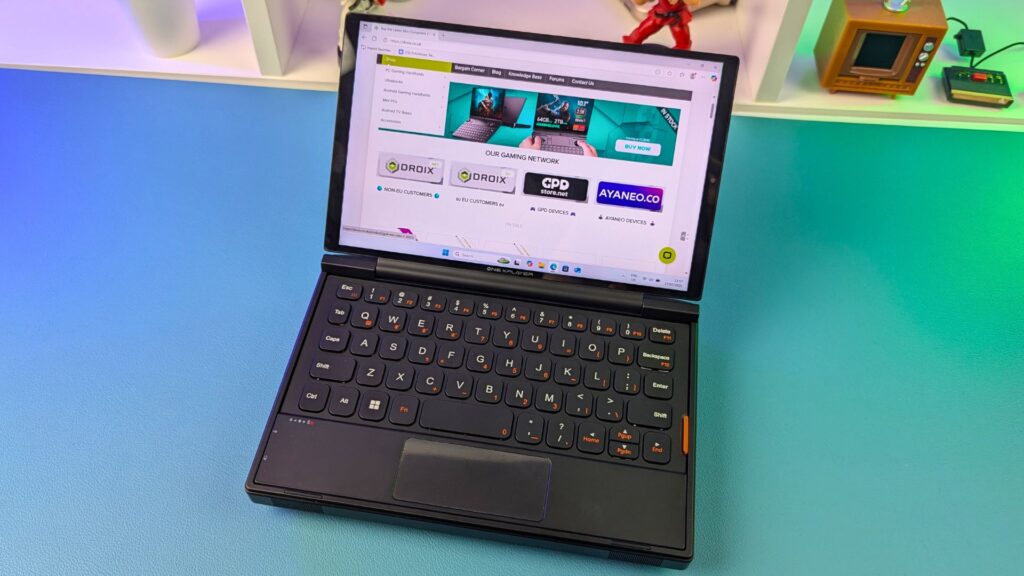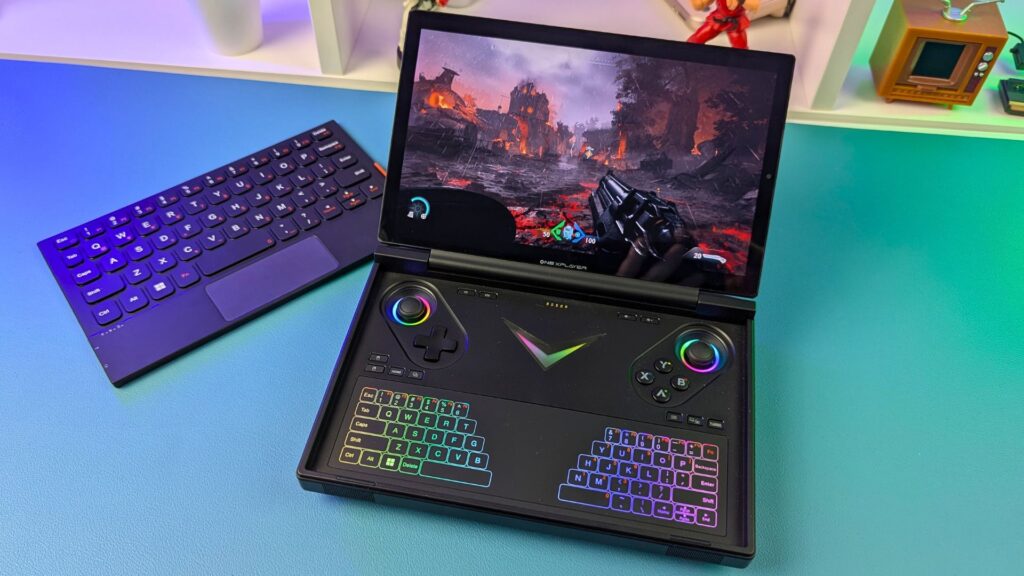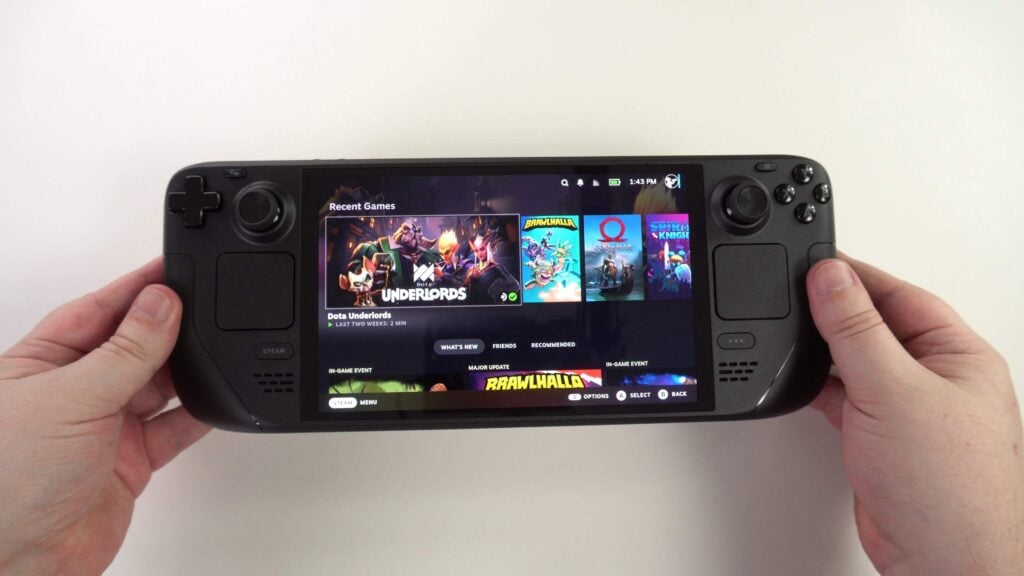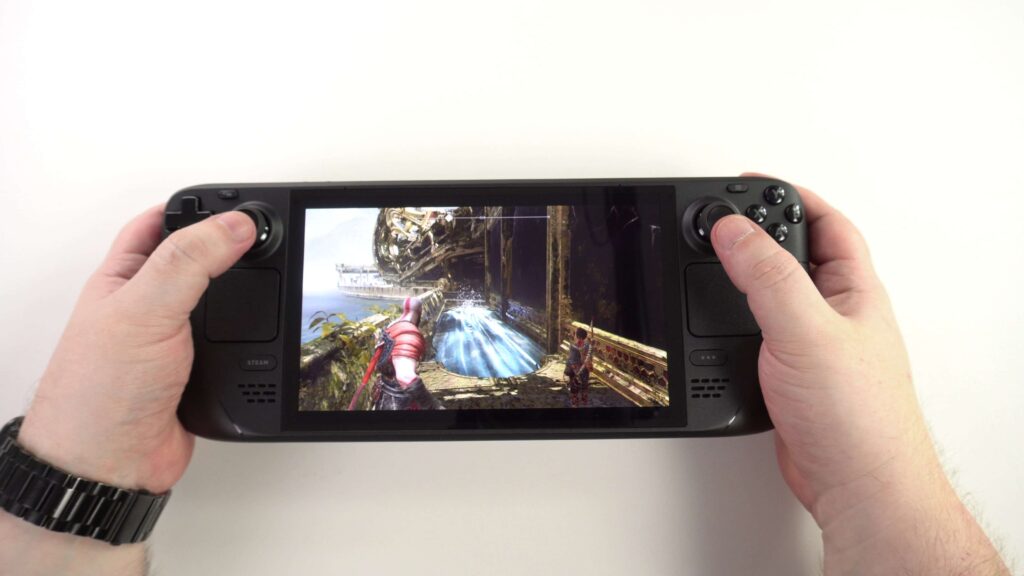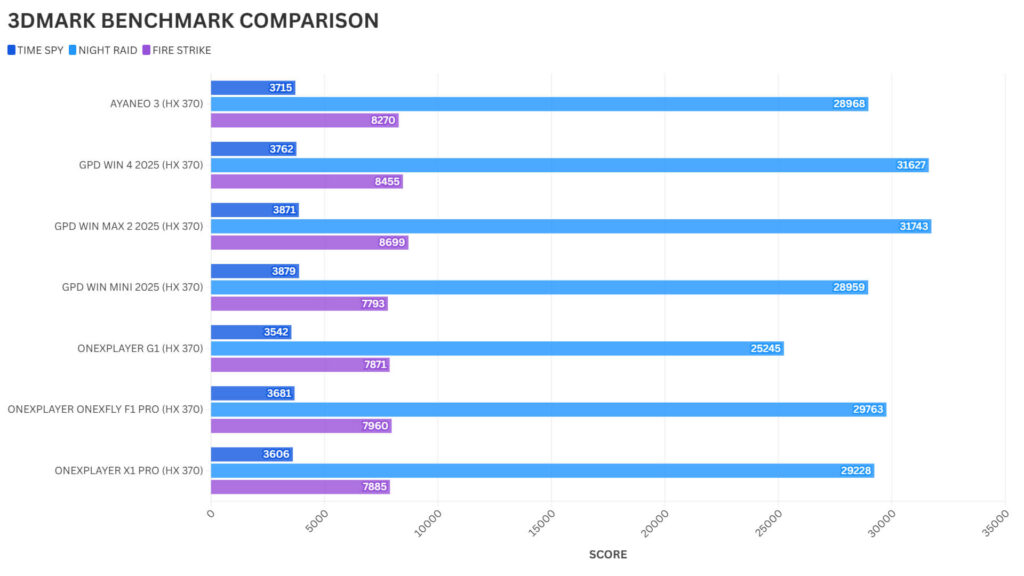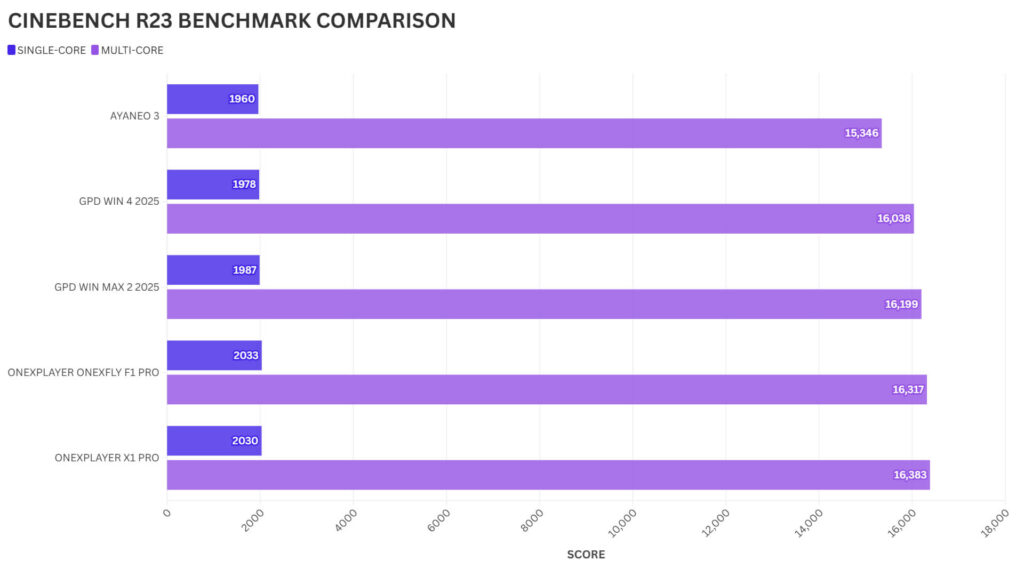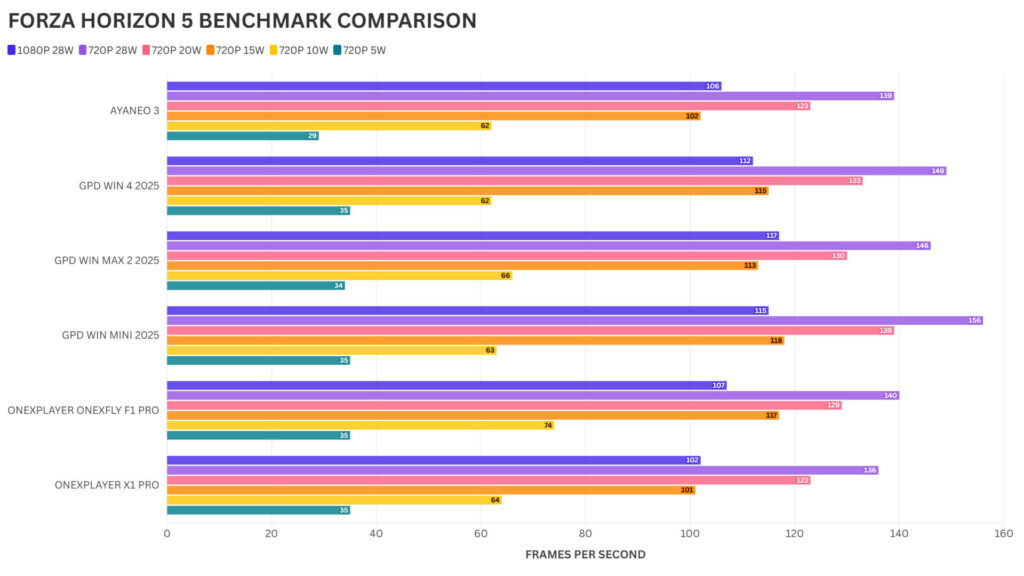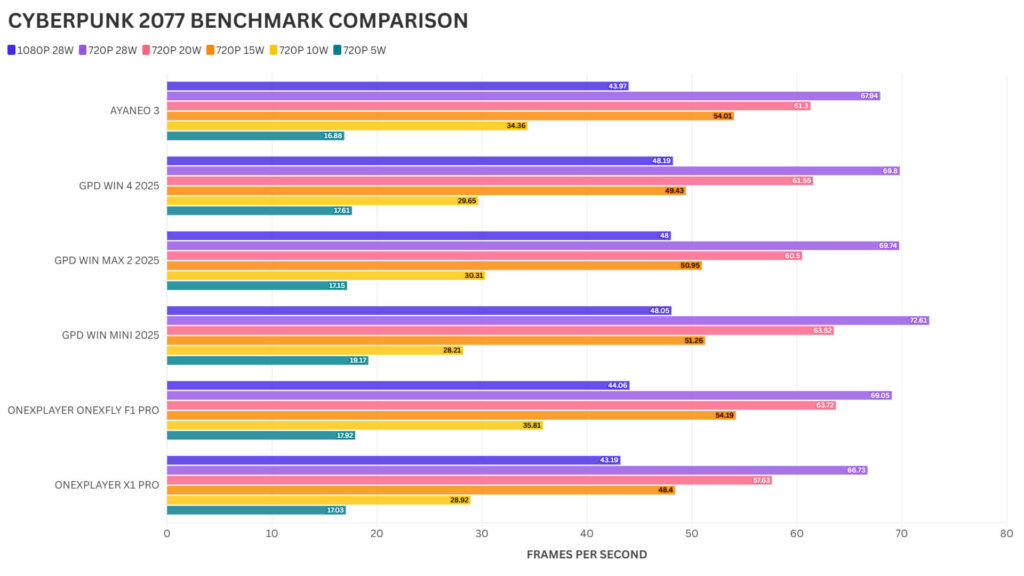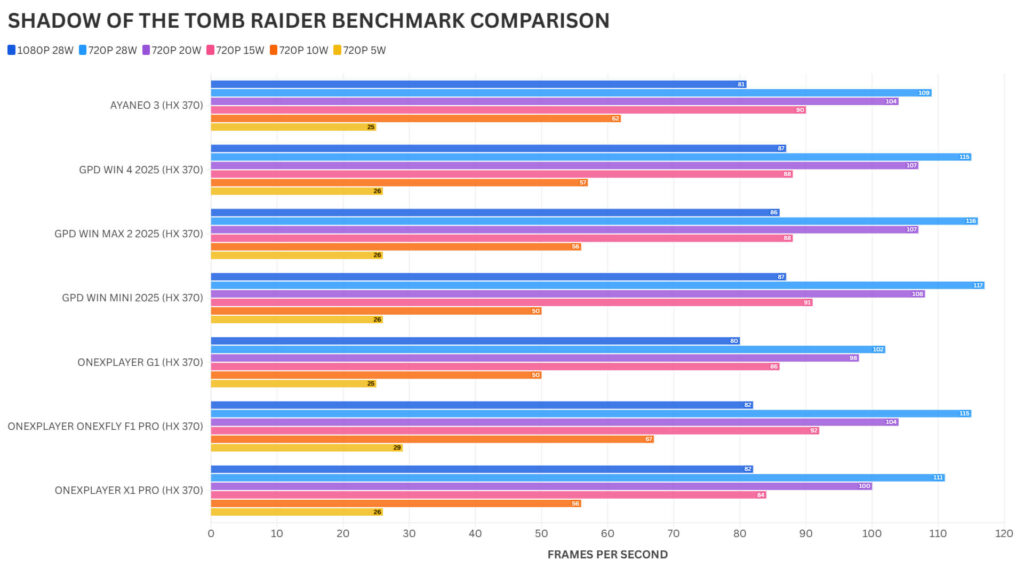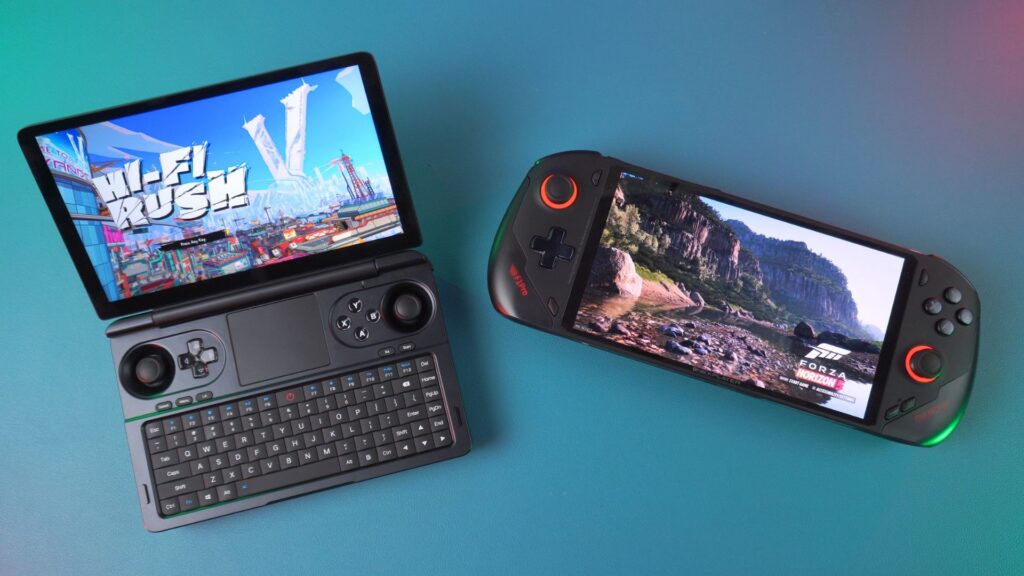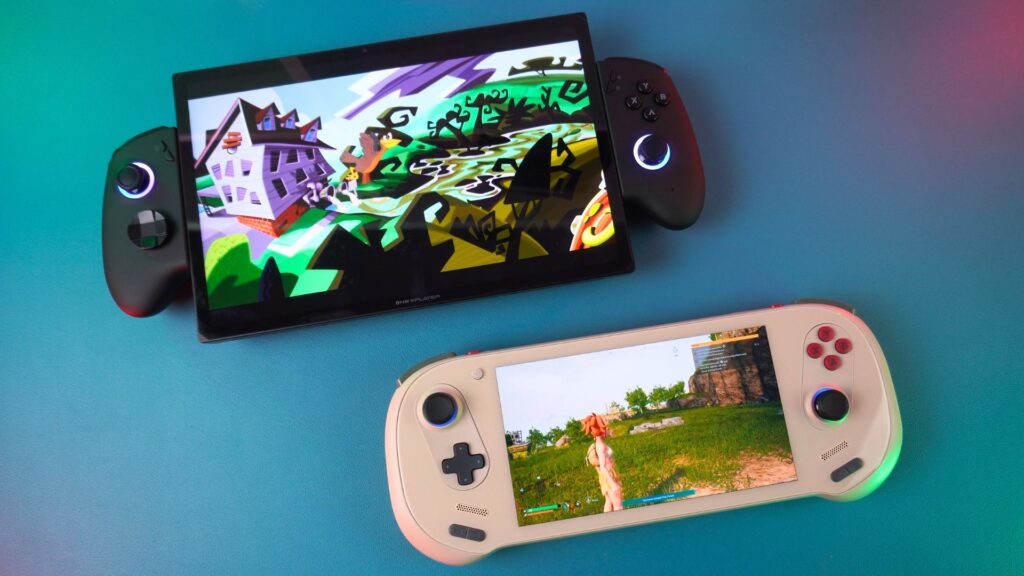A handheld gaming PC is a compact, all-in-one device that offers the power and versatility of a standard Windows-based gaming computer—except you can carry it in your hands. In addition to running Windows 11 or another operating system, these devices typically feature integrated displays, gamepad controls, and enough performance to handle modern games.
The GPD WIN 4 2025, for example, sports a more traditional handheld console form factor with a 6-inch screen, while the GPD WIN MAX 2 2025 adopts a larger clamshell design that adds a built-in keyboard. The GPD WIN MINI 2025 shrinks the dimensions yet retains impressive specs, while the ONEXPLAYER lineup, including the X1 Pro and F1 Pro, differentiates itself with a variety of screen sizes and detachable controllers. Then there’s the AYANEO 3, known for its modular controls and sleek look. Each brand and model has its own twist on design, size, and features, giving consumers plenty of choices when it comes to comfort, portability, and performance.
The roots of popular handheld gaming PCs trace back to devices like the first GPD WIN, which used an Intel Atom x7-Z8700 processor in 2016. Those early models handled simpler Windows games and lower-demanding titles well enough, but they struggled with graphically intensive experiences due to limited CPU and GPU power.
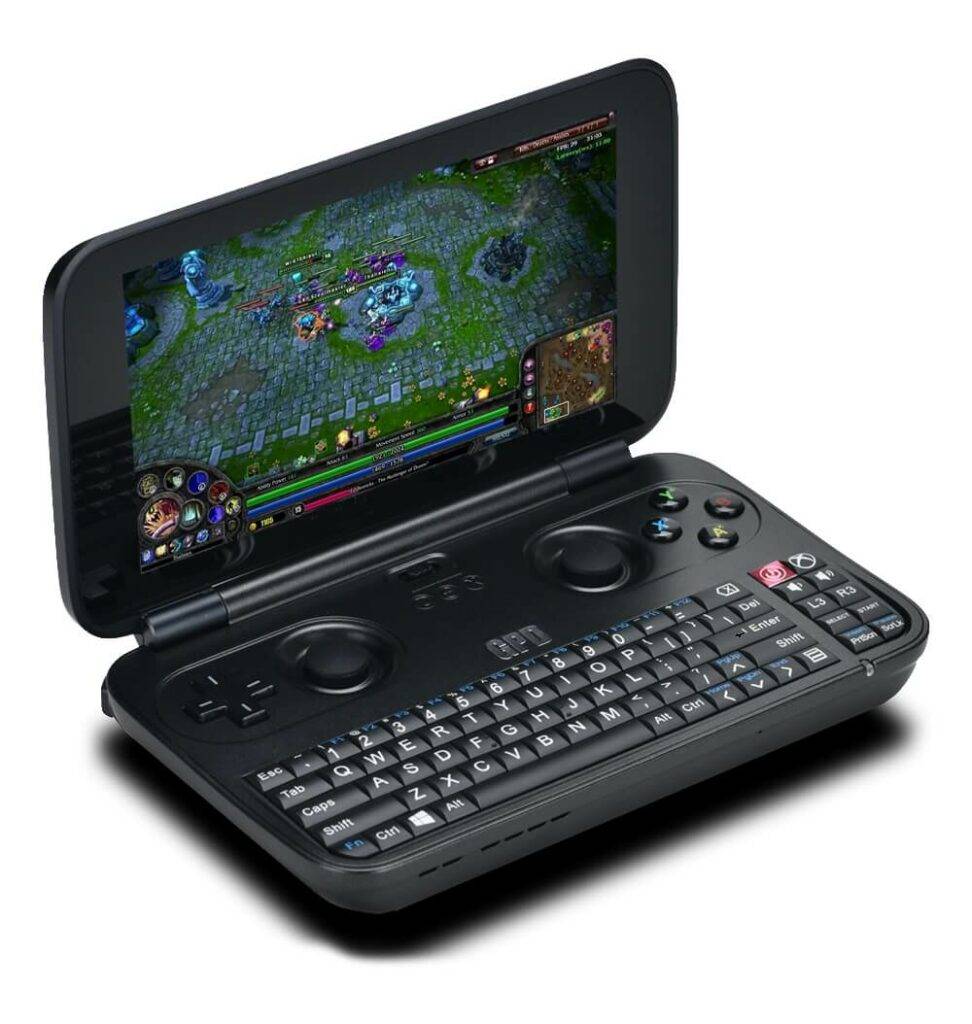

Fast-forward to today, and the new wave of handhelds often feature cutting-edge processors such as the Ryzen AI 9 HX 370 on the GPD WIN 4 2025, combined with beefy integrated or discrete graphics. Thanks to these advancements, it’s now possible to run recent AAA releases with respectable frame rates, showcasing just how far handheld gaming PC technology has come.
For those who are frequently on the go, a handheld gaming PC can be a game-changer, quite literally. Rather than lugging around a hefty desktop tower or even a moderately sized gaming laptop, these handheld devices slip into a backpack and can be used virtually anywhere. Better yet, when you’re back home, many models can connect to an external GPU—like the GPD G1 or ONEXPLAYER ONEXGPU 2—granting extra graphical horsepower for an even better desktop-like gaming experience.
Whether you need a travel-friendly companion for gaming on flights and commutes or want a versatile PC that can adapt to multiple scenarios, a modern handheld gaming PC offers impressive flexibility without sacrificing the ability to play the latest Windows games. Lets learn more about some of the best handheld gaming PCs you can experience right now.
Best Handheld Gaming PC 2025 Video
GPD WIN 4 2025 – Best handheld gaming PC for ultra-portability
The GPD WIN 4 2025 is a compact gaming PC that blends high-end performance with a familiar, ergonomic design. Its standout feature is the integration of the powerful AMD Ryzen 9 AI HX 370 processor, bringing next-gen computing and AI capabilities into a truly portable form. Paired with up to 32GB of LPDDR5x RAM, a 6-inch Full HD display, and storage options up to 2TB NVMe SSD, the WIN 4 2025 is built for serious gaming on the go while maintaining the look and feel of its predecessors.

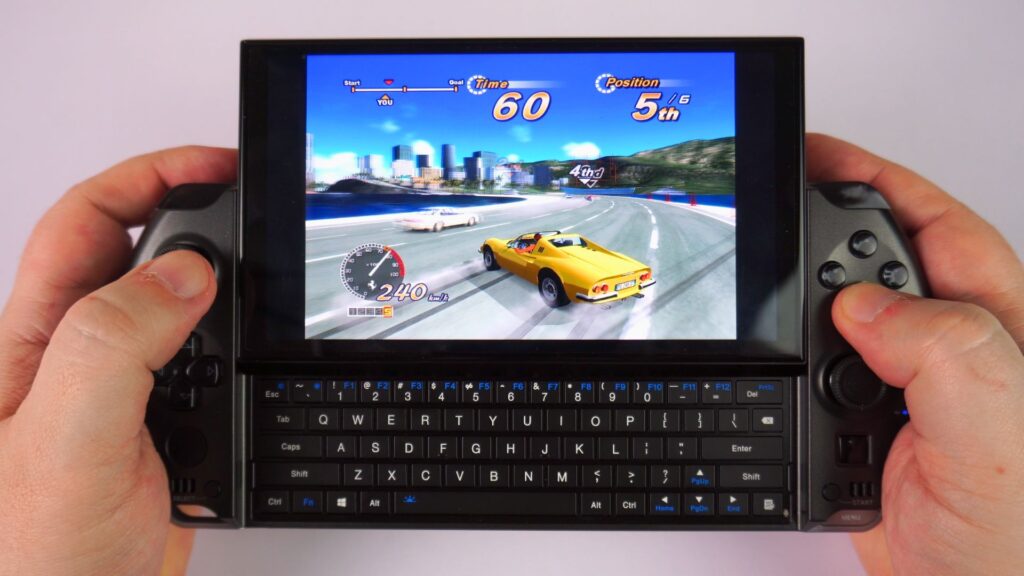
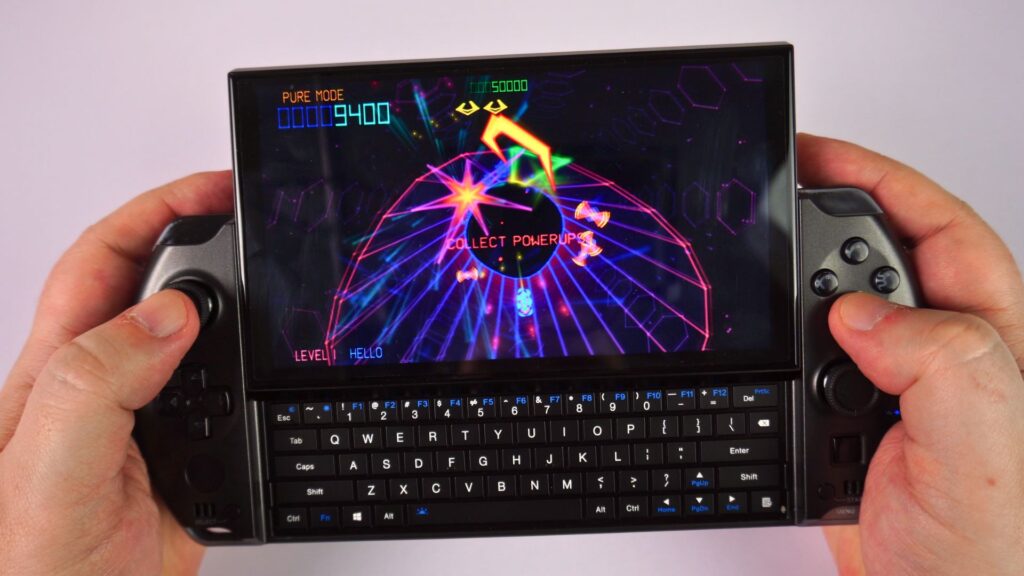
Delving into the specs, the AMD Ryzen 9 AI HX 370 is a major upgrade, offering improved clock speeds and efficiency over the previous 8840U CPU. This processor, combined with the Radeon 890M GPU, delivers a notable boost in performance for modern AAA titles and multitasking. The 6-inch H-IPS display boasts a 1920×1080 resolution, offering crisp visuals and excellent color reproduction for a screen of this size. Storage and memory are equally impressive, with up to 2TB NVMe SSD for fast load times and generous 32GB LPDDR5 RAM for seamless multitasking and future-proofing. Connectivity options include Wi-Fi 6E, Bluetooth 5.3, USB-C ports, and OCuLink support for external GPU docking via the GPD G1.
In benchmark testing, the Ryzen 9 AI HX 370 performs significantly better than its predecessor, especially in CPU-intensive and multitasking scenarios. Graphics performance also sees a meaningful uplift thanks to the integrated Radeon 890M GPU, making the GPD WIN 4 2025 a capable mobile gaming PC. When compared to other portable gaming computers in its class, it stands out for its balance between performance, size, and features.
What makes the GPD WIN 4 2025 a compelling option is how it delivers powerful hardware in such a small form factor. Whether you’re seeking a handheld gaming computer for commuting, a portable gaming PC for trips, or a versatile handheld gaming PC that can double as your daily driver, this device fits the bill. Its familiar layout and excellent build quality, combined with meaningful internal upgrades, make it a top contender in the compact gaming PC category. For anyone seeking a performance-focused, truly portable gaming computer, the WIN 4 2025 deserves serious consideration.
Read our full in depth GPD WIN 4 2025 review here on the DROIX blog.
GPD WIN MINI 2025 – Best handheld gaming PC for performance and portability
The GPD WIN MINI 2025 is a handheld gaming PC that combines an AMD Ryzen AI 9 HX 370 processor with a sleek clamshell design. It boasts a 7-inch LTPS touchscreen capable of both 60Hz and 120Hz refresh rates, making this portable gaming PC a strong choice for those seeking an easy-to-carry yet capable gaming device.
Delving deeper, this mobile gaming PC comes equipped with AMD Radeon integrated graphics for smooth rendering across a range of modern titles. Depending on the configuration, you can opt for up to 64GB LPDDR5x RAM and a roomy NVMe SSD (up to 4TB), ensuring speedy load times for games and applications. In addition to offering AMD FreeSync and Variable Refresh Rate support, the 7-inch display provides crisp visuals in a portable gaming computer format. Around the GPD device, you’ll find dual analog sticks, a compact keyboard, and a touchpad for versatility, as well as a USB 4 Type-C port for connecting an eGPU if you need more graphical power.



Under benchmark tests, the GPD WIN MINI 2025 compact gaming PC often places near the top when stacked against similar HX-based devices, showing excellent performance at higher TDP settings. Cinebench, 3DMark, and real-world gaming tests indicate that it retains high frame rates at 1080p in many titles, though results can level out when lowering the TDP to save battery.
Overall, the GPD WIN MINI 2025 stands out due to its solid balance of performance and portability, plus the option for expanded graphics via an eGPU. If you’re looking for a handheld gaming computer that doesn’t compromise on screen quality or hardware power, it’s certainly one to consider.
You can read our full GPD WIN MINI 2025 review here on the DROIX blog.
ONEXPLAYER ONEXFLY F1 Pro – Best handheld gaming PC for high refresh rate gaming
The ONEXPLAYER ONEXFLY F1 Pro is a well-designed handheld gaming PC that impresses with its standout 7-inch OLED display featuring 1080P resolution and a smooth 144Hz refresh rate, providing a reliable option for gamers on the go. Its sleek build and thoughtful layout make it a strong contender in today’s portable gaming market.
Delving into the technical details, this portable gaming PC offers a choice of AMD Ryzen processors, including configurations with the Ryzen 7 8840U, Ryzen AI 9 HX 365, or Ryzen AI 9 HX 370, paired with corresponding AMD Radeon GPUs that ensure consistent performance. The ONEXPLAYER ONEXFLY F1 Pro comes equipped with either 32GB or 64GB of high-speed LPDDR5x RAM and storage options ranging from 1TB to 4TB of NVMe PCIe Gen 4.0, catering to varying needs and budgets.
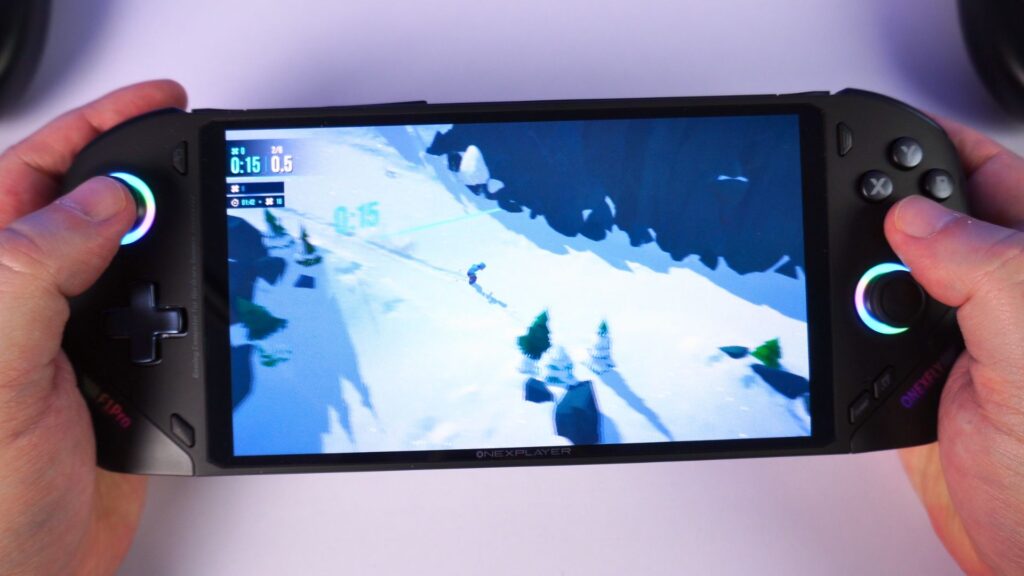
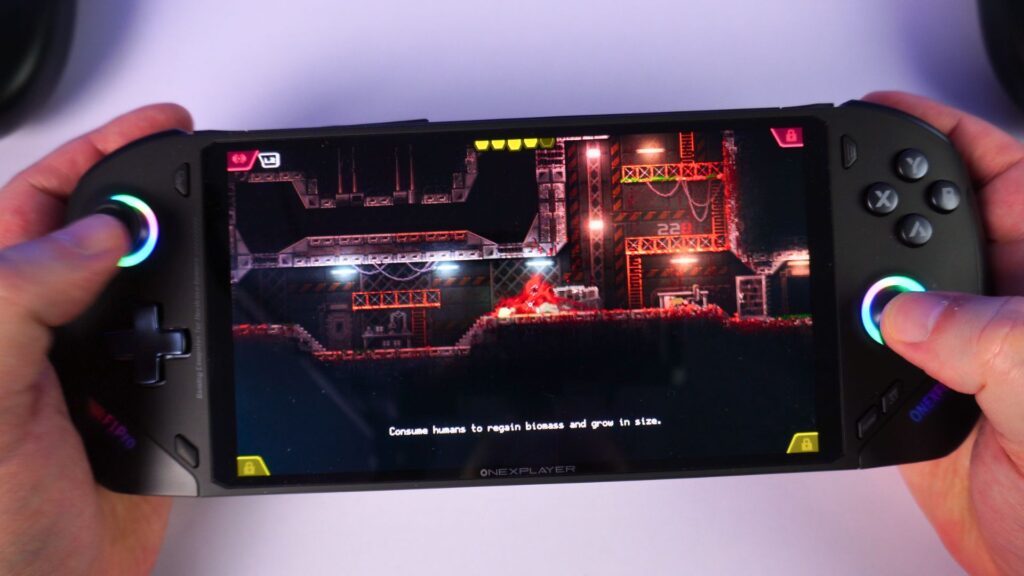

In addition to its processing power, the ONEXPLAYER ONEXFLY F1 Pro mobile gaming PC’s 7-inch OLED screen not only provides vibrant visuals but also supports a high refresh rate that enhances gaming fluidity. Its compact design and thoughtful I/O layout, which includes dual USB 4.0 Type-C ports and a micro SD card reader, add to its versatility and ease of use.
Benchmark results indicate that while the ONEXPLAYER ONEXFLY F1 Pro may perform slightly lower than some competitors at default settings, adjusting the TDP settings yields comparable or improved outcomes in both synthetic and gaming tests, making it a solid performer among similar devices in the market as a portable gaming computer.
Overall, the ONEXPLAYER ONEXFLY F1 Pro stands out for its balanced combination of technical specifications, versatile performance, and practical design, making it a great choice for anyone in the market for a compact gaming PC that doubles as a reliable handheld gaming computer.
You can read our in-depth ONEXPLAYER ONEXFLY F1 PRO review here on the DROIX blog.
GPD WIN MAX 2 2025 – Best handheld gaming PC for laptop-like productivity
The GPD WIN MAX 2 2025 is a handheld gaming PC that fuses potent hardware with a surprisingly comfortable design, making it suitable for both intense gaming sessions and everyday computing. Its standout features include a 10.1-inch 60Hz touchscreen, full-sized keyboard, and integrated gamepad controls, all packaged in a form factor that remains easy to carry around.
Under the hood, the GPD WIN MAX 2 2025 is powered by an AMD Ryzen AI HX 370 CPU paired with a Radeon 890M GPU. This configuration handles modern games smoothly while also supporting multitasking for productivity apps. There are options for up to 64GB LPDDR5X RAM, alongside storage variations extending up to 4TB, offering plenty of room for large game libraries and file management. In addition, this portable gaming PC distinguishes itself from other devices by providing extra connectivity, including an OCuLink port for eGPU support. Despite its larger footprint compared to smaller handhelds, it still classifies as a compact gaming PC due to its relatively lightweight build and portable design.
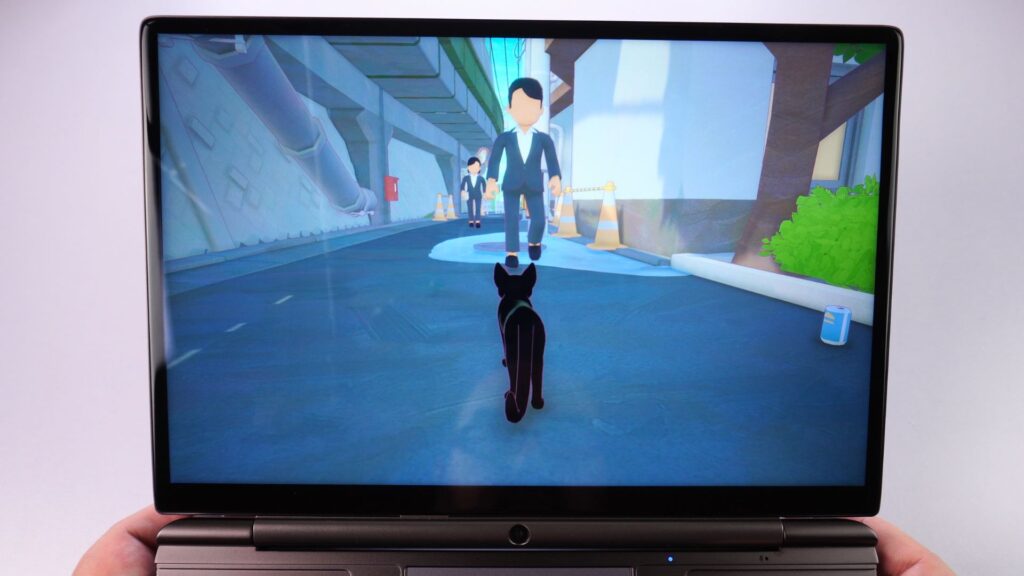
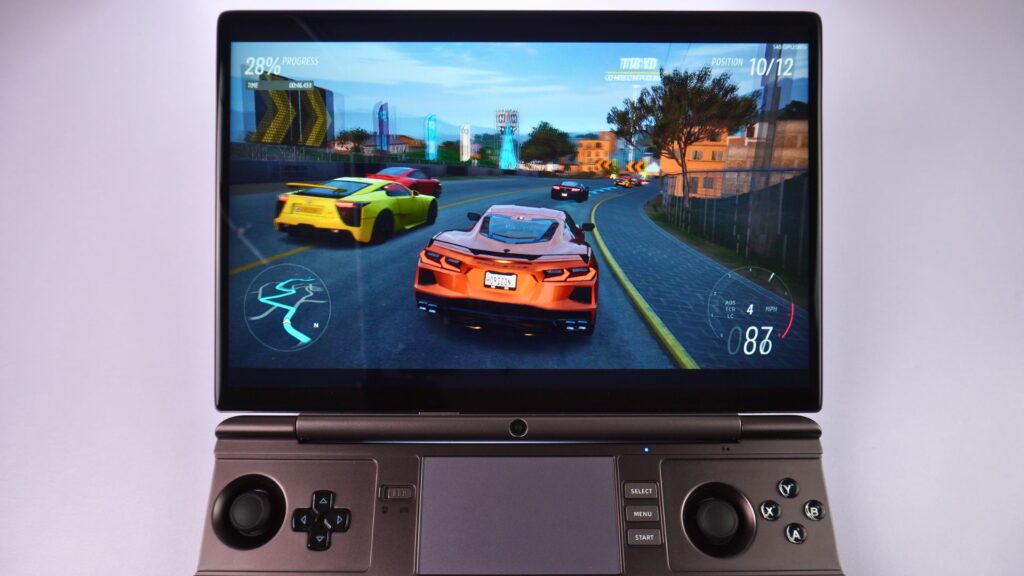
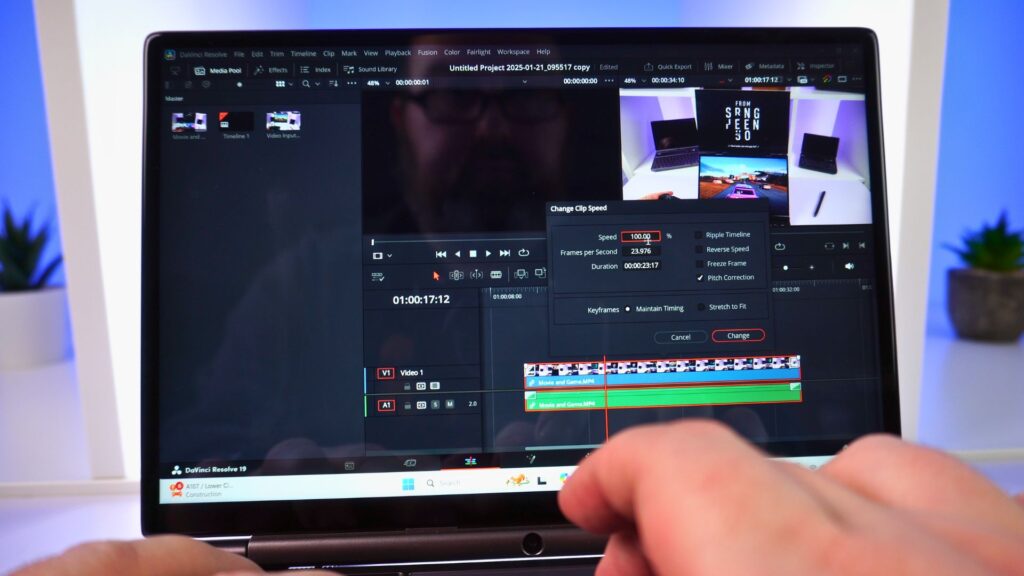
In terms of performance, benchmark tests show a noticeable leap over older models, particularly when compared to previous AMD 6800U or 7840U-based handhelds. This mobile gaming PC often runs modern titles at respectable frame rates and settings, even at higher resolutions. It stands out in multi-core benchmarks and 3D rendering tests, offering gamers and content creators sufficient power to handle more demanding workloads on the go.
Overall, the GPD WIN MAX 2 2025 is an ideal choice if you’re seeking a portable gaming computer that bridges the gap between a traditional laptop and a dedicated console. Its expanded display, solid performance, and versatile input options cement its position as a handheld gaming computer worth considering for both work and play.
Want to learn more about this great handheld? Read our GPD WIN MAX 2 2025 review here on the DROIX blogs.
ONEXPLAYER X1 Pro – Best handheld gaming PC for 3-in-1 versatility
The ONEXPLAYER X1 Pro is another versatile handheld gaming PC that combines the flexibility of a tablet, the productivity of a laptop, and the power of a gaming device in one compact unit. Its standout features include a 10.95-inch LTPS touchscreen with a high-resolution 2560×1600 display and 120Hz refresh rate, as well as detachable controllers and an optional keyboard. Under the hood, it’s powered by the AMD Ryzen AI 9 HX 370 processor with integrated Radeon 890M graphics, and offers up to 64GB LPDDR5x RAM and 4TB SSD storage. These specs make it an attractive choice for those seeking a high-performance portable gaming PC for work and play.
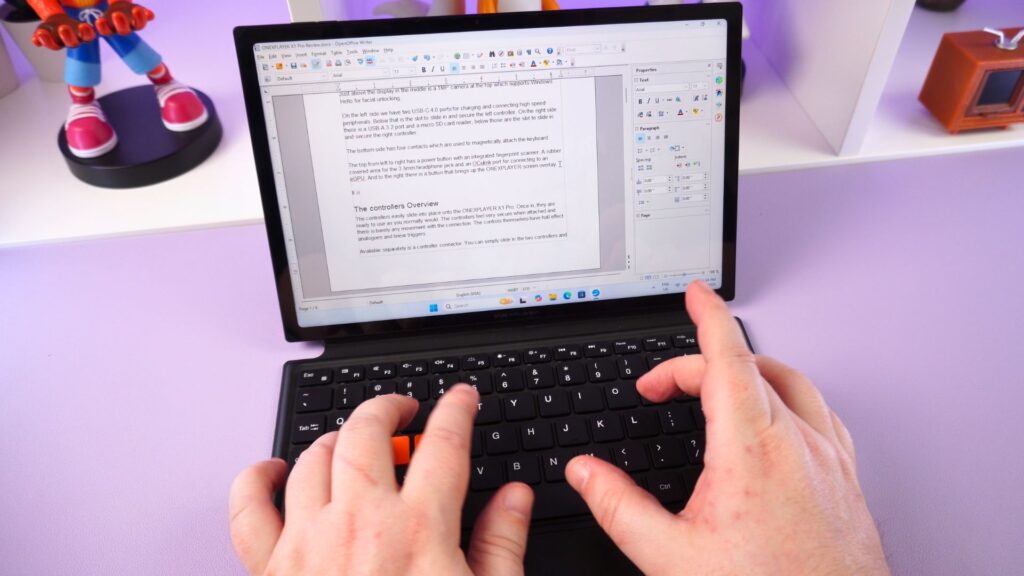


Digging deeper into the specifications, the Ryzen AI 9 HX 370 brings a balance of performance and efficiency with next-gen AMD AI capabilities built into the CPU. Paired with the Radeon 890M iGPU, the system delivers solid performance for modern titles and multitasking. The d0evice is available with either 32GB or 64GB of fast LPDDR5x 7500MHz memory, and storage options include 1TB, 2TB, or 4TB PCIe SSDs, which ensures fast load times and ample space for your game library. Connectivity includes two USB-C 4.0 ports, a USB-A 3.2 port, microSD card slot, and an OCuLink port for connecting external GPUs, providing excellent expandability for a mobile gaming PC.
The display is one of its highlights—a 10.95” LTPS panel with 2560×1600 resolution and 120Hz refresh rate, offering sharp visuals and smooth motion whether gaming or browsing. It supports Windows Hello facial recognition via the front-facing camera, and includes a fingerprint scanner for secure logins. The detachable controllers use hall effect analog sticks and linear triggers, offering precise input with minimal wear over time. When attached to the included keyboard, the X1 Pro transforms into a portable gaming computer suitable for productivity on the go.
In benchmark testing, the ONEXPLAYER X1 Pro delivers strong Cinebench scores, taking the top spot in both single- and multi-core CPU tests. It performs slightly below average in some gaming benchmarks like Forza Horizon 5 and Shadow of the Tomb Raider when compared to similar devices like the GPD WIN MAX 2 2025, but still provides a smooth and playable experience. For users looking to boost graphical performance, pairing the device with an eGPU via OCuLink offers a significant improvement, making it a truly flexible compact gaming PC.
With its unique 3-in-1 design, premium build quality, and powerful hardware, the ONEXPLAYER X1 Pro is a standout handheld gaming computer for those who want an all-in-one solution for gaming, productivity, and entertainment. Whether you’re gaming on the move, working from a café, or streaming content at home, it adapts to fit your needs. If you’re looking for a high-performance portable gaming computer that doesn’t compromise on versatility, the ONEXPLAYER X1 Pro is well worth considering.
AYANEO 3 – Best handheld gaming PC for modular customization
The AYANEO 3 is a feature-rich handheld gaming PC known for its versatile modular controls and robust internal hardware. From its swift HX 370 processor to its sleek design, the device aims to deliver a powerful yet user-friendly experience for gamers who want advanced performance in a truly portable form factor.
Central to the AYANEO 3 is the HX 370 CPU, which provides efficient power management and smooth multitasking. Paired with an integrated 890M GPU, this setup ensures most modern games can run with respectable frame rates. Gamers can choose configurations that include up to 32GB RAM, speeding up load times and improving overall responsiveness. Completing the core specs is an SSD, which accelerates game launches and file transfers, making this portable gaming PC highly capable for both casual and AAA gaming sessions.
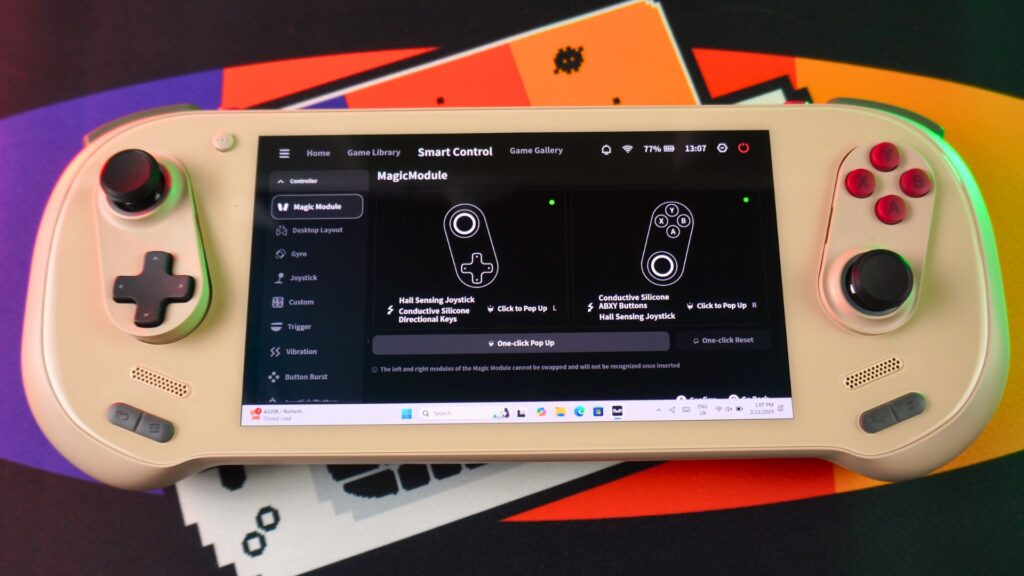
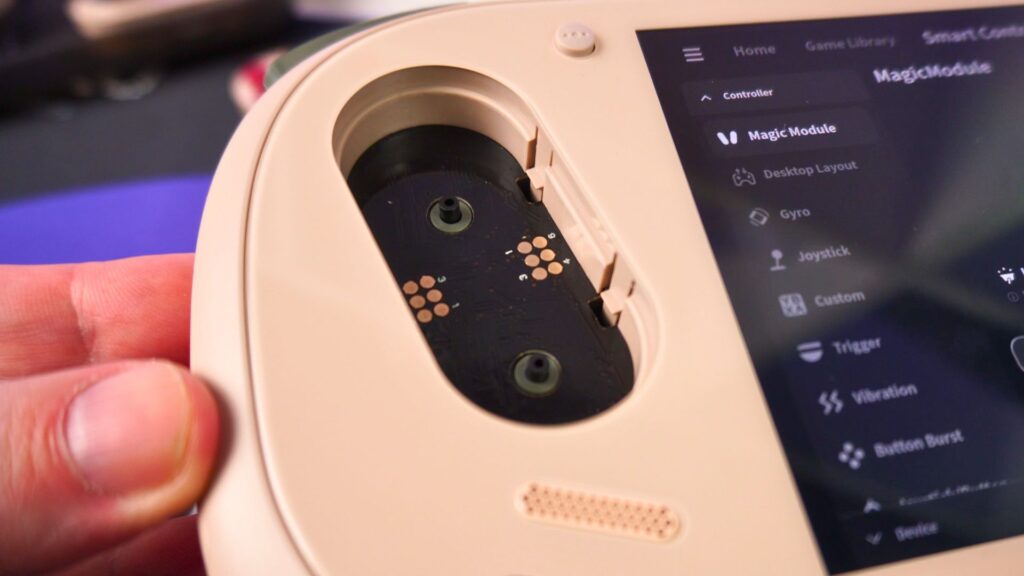
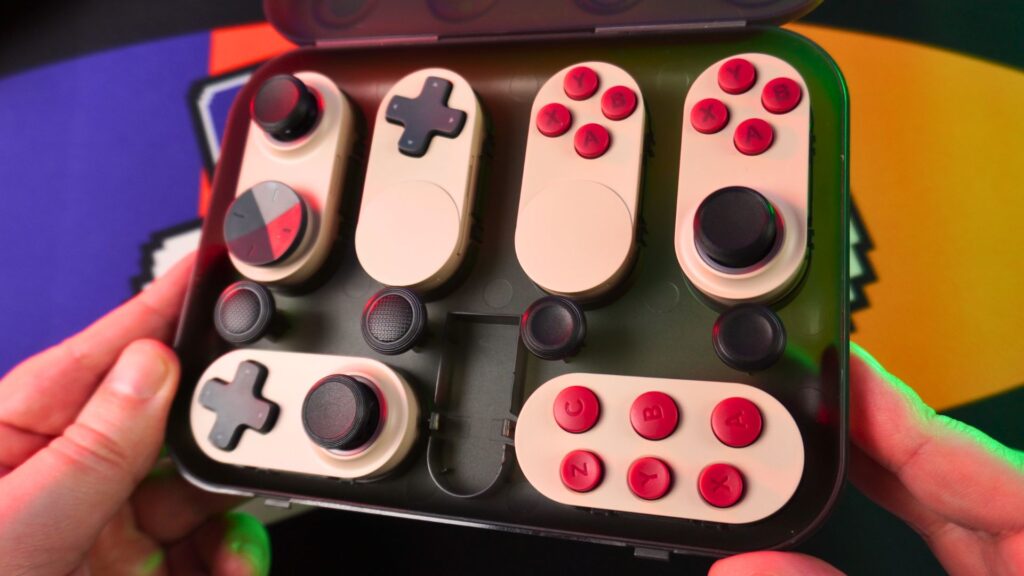
In terms of display, the AYANEO 3 offers both a 7-inch OLED panel for vibrant colors and a 7-inch LCD alternative for balanced power consumption. It supports 60Hz, 90Hz, 120Hz and 144Hz refresh rates. The system also incorporates convenient features like two USB-4 ports, an OCulink port for eGPU support, and Hall effect triggers for enhanced accuracy. Combined, these elements make the AYANEO 3 an enticing mobile gaming PC option, catering to different preferences in display quality and peripheral connectivity.
One of the AYANEO 3’s defining innovations is its modular control system, allowing users to swap and arrange input modules to suit their personal playstyle. This high level of customization sets it apart from the average compact gaming PC, as players can configure analog sticks, touchpads, and button layouts exactly as they prefer.
Benchmark tests of the pre-production model indicate that the AYANEO 3 performs near the lower tier of similar devices, though it may trail by a small margin against some competing models at higher TDP settings. Nonetheless, it shows consistent results across a range of modern titles, confirming that this portable gaming computer can handle demanding games without significant performance dips.
Overall, the AYANEO 3 stands out with its powerful hardware, customizable controls, and multiple display options, making it a well-rounded handheld gaming computer for anyone seeking serious performance in a portable form. For gamers wanting both flexibility and power, this device’s thoughtful design with modular controls make it a noteworthy contender from AYANEO in the current handheld market.
You can read our AYANEO 3 review here on the DROIX blog.
ONEXPLAYER G1 – Hybrid gaming and productivity
The ONEXPLAYER G1 presents itself as a true hybrid device, blending the power of a gaming laptop with the form factor of a handheld. Under the hood, it’s a performance beast, featuring the top-tier AMD Ryzen AI 9 HX 370 processor paired with a Radeon 890M GPU. This can be configured with up to a massive 64GB of incredibly fast LPDDR5X RAM and up to a 4TB high-speed SSD, ensuring it can handle any game or productivity task you throw at it.
This power is matched by a stunning display. The G1 features a large 8.8-inch screen with a sharp 2560 by 1600 resolution and an ultra-smooth 144Hz refresh rate, making games look both crisp and incredibly fluid. Connectivity is also a major strength, with two USB 4 ports, a full-size USB-A port, and the all-important OCuLink port, allowing you to connect an external GPU for desktop-level graphics performance.
What truly sets the ONEXPLAYER G1 apart is its unique design. It comes with a detachable magnetic keyboard that, when removed, reveals a full set of physical gaming controls and a secondary smaller touch-sensitive keyboard, perfect for quickly typing a message in Discord or browsing the web without interrupting your game. This dual-input system makes it one of the most versatile devices on the market.

In our benchmarks, the ONEXPLAYER G1 was a top performer, especially in CPU-intensive tasks. It traded blows with the larger ONEXPLAYER X1 Pro for the top spot in both Geekbench and Cinebench multi-core tests. Its gaming performance was strong, it was consistently among the top-tier devices, proving that its hybrid design doesn’t compromise on power. The G1 is a fantastic choice for gamers who want a powerful, do-it-all device with a unique and innovative design that seamlessly blends work and play.
Steam Deck (OLED) – Best of the rest
The Steam Deck OLED is an impressive update to Valve’s best handheld gaming PC, retaining the core specifications of its predecessor while introducing significant enhancements. It features a 7.4-inch OLED display with a resolution of 1200×800, HDR certification, 1000 nits peak brightness, and a 90Hz refresh rate.
The device maintains its familiar dimensions and weight but includes an updated AMD APU for better power efficiency. Connectivity options are robust with Wi-Fi 6, improved Bluetooth, and a range of ports. The battery capacity has been increased to 50Wh, promising longer play sessions, while the design incorporates better thermal management with a larger fan and more efficient heat dissipation.
Performance benchmarks for the Steam Deck OLED show consistent results with the original model, reflecting identical gaming performance due to the unchanged internal hardware specifications. However, the OLED screen offers a noticeable visual upgrade, with brighter, more vibrant colours and deeper blacks, enhancing the gaming experience significantly.
Battery life has seen a substantial improvement, with up to 66% longer runtime in some tests. The device runs cooler and quieter, further enhancing the overall user experience. Despite the influx of competing devices, the Steam Deck OLED holds its own, particularly due to the smooth SteamOS interface and extensive game library support.
The Steam Deck OLED is a compelling choice for anyone interested in the best handheld gaming PC. Its upgraded OLED display, improved battery life, and additional minor enhancements make it a significant improvement over the original model without a price increase. The device excels in providing a portable gaming experience with the convenience of the SteamOS interface, offering access to a vast library of games.
While it faces competition from Windows-powered handhelds, the Steam Deck OLED remains an excellent option for those seeking a powerful, user-friendly, and visually stunning portable gaming solution. Its ability to run modern games efficiently and the added storage capacity make it a fantastic investment for gamers on the go.
Benchmark Comparisons
All the following system and gaming benchmarks were conducted on a consistent Windows 11 environment and used the same AMD Graphics Driver version 25.6.1. Wherever possible, test conditions were aligned to ensure fairness, including equivalent power settings, resolutions, and game or benchmark versions. By controlling these variables, we aimed to highlight each device’s raw performance potential, allowing for a clearer comparison of their relative strengths and weaknesses.
Please note that the AYANEO 3 benchmarks are based on a pre-production model and may change for its final release.
Geekbench 6
In the CPU test, Geekbench 6, the single-core results were a close to a dead heat, with all the handhelds performing very closely. When we look at multi-core performance, however, the larger devices leveraged their better cooling to pull ahead. The ONEXPLAYER F1 Pro came out on top, closely followed by the GPD WIN Mini and ONEXPLAYER G1.
3DMARK
Kicking things off with 3DMark, a test of raw graphics power, a clear winner emerged. The GPD WIN MAX 2 2025 dominated the demanding Time Spy and Fire Strike benchmarks, showcasing the advantage of its excellent cooling. However, the ONEXPLAYER X1 Pro and GPD WIN 4 2025 were hot on its heels, with all the new HX 370 devices posting impressive scores that leave older models in the dust.
Cinebench R23
Most devices hover around similar single-core scores, with the ONEXPLAYER ONEXFLY F1 PRO (2033) and ONEXPLAYER X1 Pro (2030) narrowly leading, followed by the GPD WIN MAX 2 2025 at 1987. The GPD WIN 4 2025 and AYANEO 3 remain close behind at 1978 and 1960, respectively.
In multi-core performance, the ONEXPLAYER X1 Pro posts the highest result (16383), trailed slightly by the ONEXPLAYER ONEXFLY F1 PRO (16317) and GPD WIN MAX 2 2025 (16199), while the GPD WIN 4 2025 (16038) and AYANEO 3 (15346) show lower but still solid multi-core results. The GPD WIN MINI 2025 data for multi-core was unavailable.
Cinebench 2024
Cinebench, which focuses on CPU rendering performance, showed a similar trend. Single-core scores were again virtually identical across the board. But for sustained, heavy multi-core tasks, the ONEXPLAYER X1 Pro once took the crown, proving that its larger chassis gives it a distinct advantage for demanding workloads like video rendering, making it a top choice for content creators on the move.
Forza Horizon 5
In the open world of Forza Horizon 5, performance was stellar across all the new handhelds. For pure frame rate junkies, the GPD WIN MAX 2 2025 scored the highest at 1080p. However, the most consistent performer across all power levels was the GPD WIN MINI 2025, which offered incredibly smooth and efficient gameplay, making it a fantastic choice for long gaming sessions on the move.
Cyberpunk 2077
Finally, the ultimate test: Cyberpunk 2077. This futuristic RPG pushed every device to its absolute limit. The AYANEO 3 provided the highest frame rates overall. Looking at the results we do see a lot of changing positions depending on the resolution and TDP which we found interesting.
Shadow of the Tomb Raider
The demanding Shadow of the Tomb Raider benchmark really separated the contenders. Once again, the GPD WIN Mini achieved the highest peak frame rates. The AYANEO 3 did well here. It provided a stable and high-FPS experience across every resolution and power setting we threw at it.
Benchmark Summary
Across all the benchmarks, no single model completely dominates in every test, though a few consistently rise to the top. GPD WIN MAX 2 2025 often excels in graphics-heavy benchmarks like 3DMark and Forza Horizon 5 at higher resolutions, indicating strong GPU performance.
Meanwhile, ONEXPLAYER X1 Pro and ONEXPLAYER ONEXFLY F1 PRO post impressive scores in CPU-focused workloads like Cinebench and Geekbench, frequently taking first or second place in single- and multi-core tests. GPD WIN MINI 2025 also stands out in several scenarios (particularly Geekbench single-core and Forza at 720p) but is missing some Cinebench R23 data.
The GPD WIN 4 2025 lands slightly behind the leaders, yet still performs competitively across the board. The AYANEO 3 does well in the gaming benchmarks.
Final Thoughts
So, after all the tests, what is the best handheld of 2025? The answer truly depends on what you value most. If you need ultimate portability, the GPD WIN 4 2025 is unmatched. For laptop-like productivity, the GPD WIN MAX 2 2025 is in a class of its own. The GPD WIN MINI 2025 strikes a fantastic balance of power and size, while the ONEXPLAYER ONEXFLY F1 Pro is a dream for high-refresh-rate gaming. For those who love to tinker, the AYANEO 3’s modular controls are a game-changer, and for sheer versatility, the ONEXPLAYER X1 Pro’s 3-in-1 design is tough to beat.
On the other hand, if you plan to do more than just gaming—like running productivity apps or even heavier workloads—a larger form factor with a built-in keyboard could be a game-changer. By reflecting on what you truly need from your handheld, you can zero in on the perfect model that satisfies your requirements in terms of power, screen size, battery life, and comfort.
Personally, I’ve spent many hours with each over the past several months and they do have their own features which sets them apart. It is a tough one to call for this reason. My top choice is the AYANEO 3, it’s stunning looking, has modular controls, decent performance and a great looking display. It has everything you want from a gaming handheld. My close second is the ONEXPLAYER X1 Pro with the massive display and you can change its functionality based on your requirements.
If you’re still unsure or want to explore the different options in person, be sure to check out the handheld gaming PC category at the DROIX store. The selection includes everything from compact, ultra-portable devices to more expansive models that double as mini-laptops.
But now we want to hear from you. Based on everything you’ve seen, which of these amazing devices would you choose? Is there a feature that stands out as a must-have for your gaming on the go? Let us know your favourite and why in the comments below.
Check out page two of this article for last years best handheld gaming PCs.




